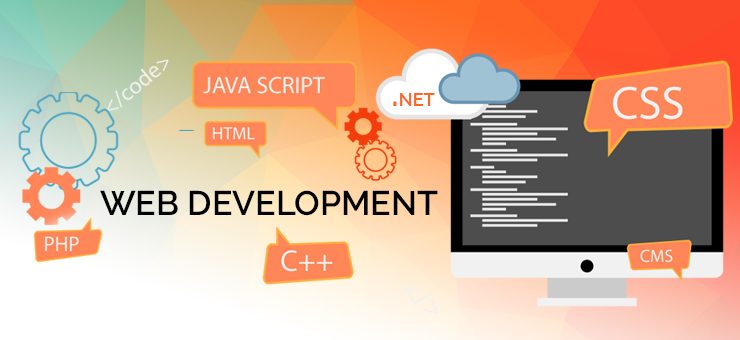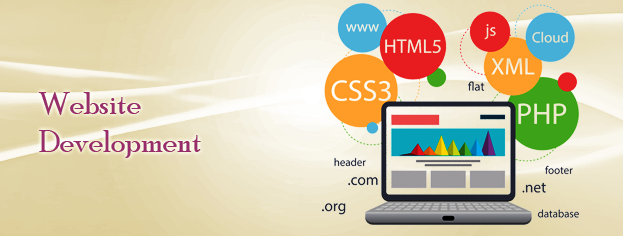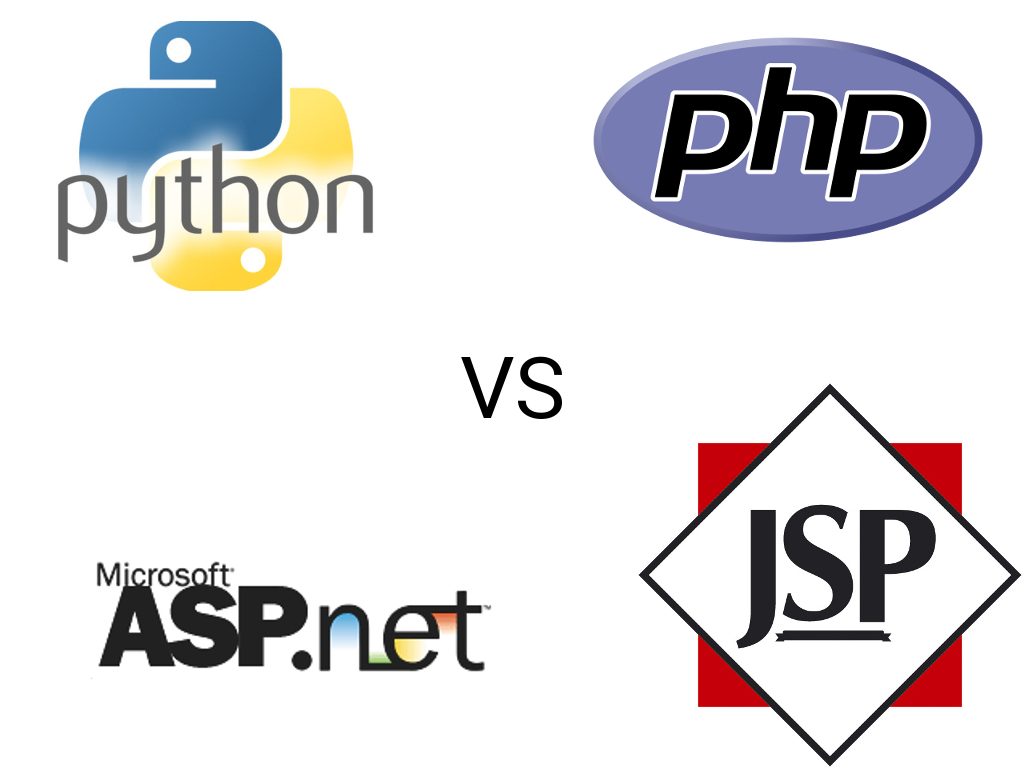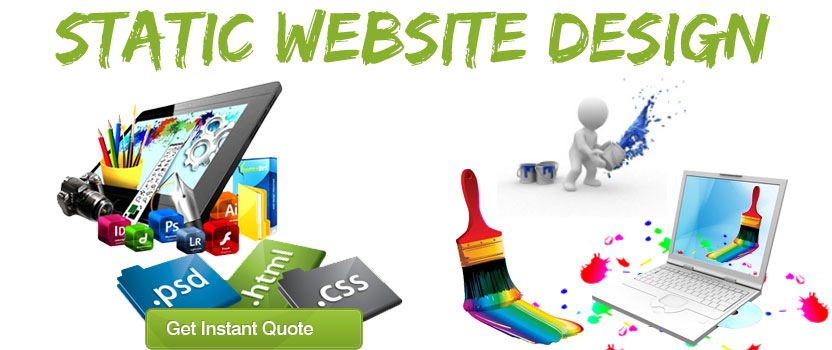
With so many kinds of websites developed these days, it’s easy to get lost in all those types. Let’s demystify them, shall we?
There are three different types of websites which will be discussed at the last of this post but before that what things it is essential for us to know about web development. Let’s explore it, right now!

What is Website Development?
Website development(aka web development) widely refers to the works involved with the creation of sites for hosting by means of internet or an intranet. The website development process constitutes website design, development of the web content, front-end(i.e.client side)/back-end(i.e.server-side) development or scripting and network security design, among different tasks.
Also, the ever-growing technologies and approach have continually aided developers create more dynamic, powerful and intuitive websites. Further, web designers presently help to convey applications as web services which were previously merely available as applications on a PC thereby allowing numerous chances to decentralize data and media distribution as well. For instance, consider the advancement of cloud services like Google docs, Dropbox etc. This has allowed users to access the applications from many locations instead of being tied to the specific workstation to accomplish the task.
Basics that you should understand about Web Development
Web Development Overview
Check out these three divisions of web development, which might help you better understand how any web page is developed.
- Front-End Development(aka Client-side Development)
- Back-End Development(aka Server-side Development)
- Database Technology
- Front-End Development(aka Client-side Development)
Front-end development means what the users view when they load the particular web page in the internet. This development might include the development of the web content, web design and how you interact with it. This task is accomplished with the aid of three codes namely, HTML, CSS and JavaScript.
Firstly, Hyper Text Markup Language(HTML), is a unique language that web browsers use to interpret and compose text content such as text, images etc. and later to transfer it into a web pages and web applications. Each page content on the internet is composed in HTML shaping the foundation for any web applications development.
Secondly, Cascade Style Sheets(CSS), is a code or style sheet language associated with cosmetic part such as allows to include layout, colors and fonts for the presentation of web pages.
Thirdly, alongside HTML and CSS, JavaScript is another core scripting language and technology of the world wide web, which enables to create functional and interactive web pages and has become the indispensable part of any web applications.
- Back-End Development(aka Server-side Development)
Back-end development regulates the behind scenes of any web application. The back-end regularly utilizes a database to engender the front-end web results.
It’s easier for you to understand if I take an example of Facebook as we all might have become familiar with its downright usage, right? Every time, when you login your Facebook account, you receive latest updates in your News feed that you have not seen before, but how? Have you ever put some effort to think about it? If not, don’t worry! this post will help you understand the secret. In that case what happens a script on back-end(server-side) would receive Facebook updates and helps regenerate the front-end i.e. client-side results accordingly.

Of course, there should be some written format or coding languages and frameworks for back-end developers, which are as follows:
PHP
Ruby on Rails or simply Rails
ASP.NET
Perl
JAVA
Python
- Database Technology
This is the collection of data information which can be stored and accessed via digital channel. Also, the database enables to interact with end-users, other applications and the database itself to capture, analyze and update data and information.
Types of Website Development
Nowadays, there are several websites developed by the web developer to promote or boost any products, services, information and many more. You know all these fall into the three category: Static, Dynamic and E-Commerce Website Development.
- Static Website Development
Static Websites are the most basic one and consists fixed content on the web page and are more convenient to create as well. Unlike dynamic and e-commerce websites, they do not demand any Web Programming or database design to publish on the internet. It also remains the same for every viewer to the website. A static website pages can simply be built by HTML code and each page gets changed only when manually updated or edited by the web designer or developer.

This types of websites are best preferred by those who are willing to create a smaller websites and demands less frequent and few content updates. For larger websites, however, and the ones which demands more frequent and more content updates, dynamic website with better Content Management System(CMS) would be recommended.
Static Websites provides several benefits to the web clients, which are as follows:
1. Can be created and hosted easily
2. Comparatively cost is lower than that for dynamic websites
3. Can be created and designed quickly
4. Modification and updates is easy as it demands little HTML coding skill
5. Best fits for small firms that requires less frequent content dates.
- Dynamic Website Development
Dynamic Websites are those web pages which are generated in real-time with the aid of scripting language, such as PHP or ASP. When the dynamic website is accessed, the code within the web page is parsed on the server and resulting HTML is sent to the User’s browser.
Most large firms prefer dynamic websites to static websites due it’s responsive and customized design features. It also makes use of CMS panel in order to manage web content such as text, images etc. ensuring highly attractive website development. Dynamic website also access data from a database and thus it is necessary for a web developer to update a database record for altering web content. Those who are seeking for maximum number of pages in their website and wish multiple users to update the web content without editing the page layout, dynamic website is the best platform to opt.

- E-commerce Website Development
E-commerce simply means electronic commerce. E-commerce Websites are those dynamic website with the means of which you can sell your products or services online through a web, or via digital channel. With the advancement of processing of credit cards electronically, it is possible to buy or sell any product through internet in today’s world. The E-commerce website behave as digital cart for shoppers to exchange goods or services.
Nowadays e-commerce websites are increasing enormously as more and more business are moving into the internet sharing their products and service’s information to the more potential customer which was not possible to approach following traditional marketing channel. The e-commerce website also integrates commercial transaction and online payment making it lively in this competitive world.

Phew!
I hope you guys learned something interesting about website development and it’s basics too and enjoyed a lot reading the post. Wish to see you in many more upcoming posts! Till next time, enjoy every moment!
